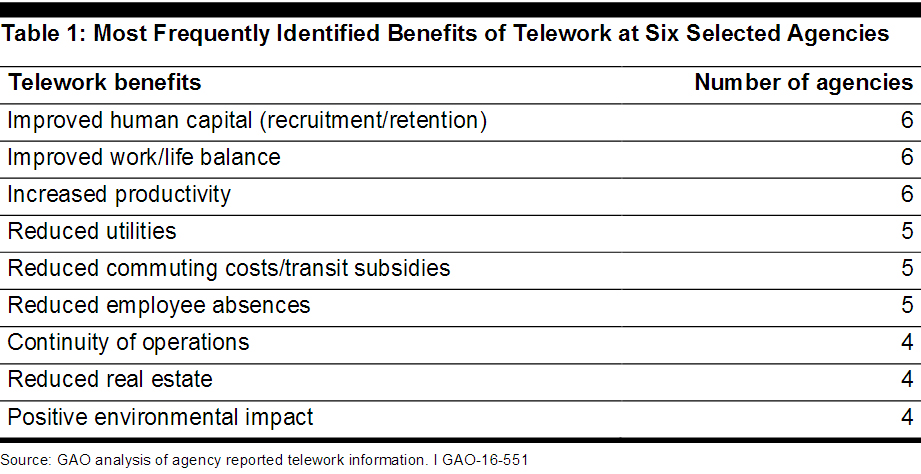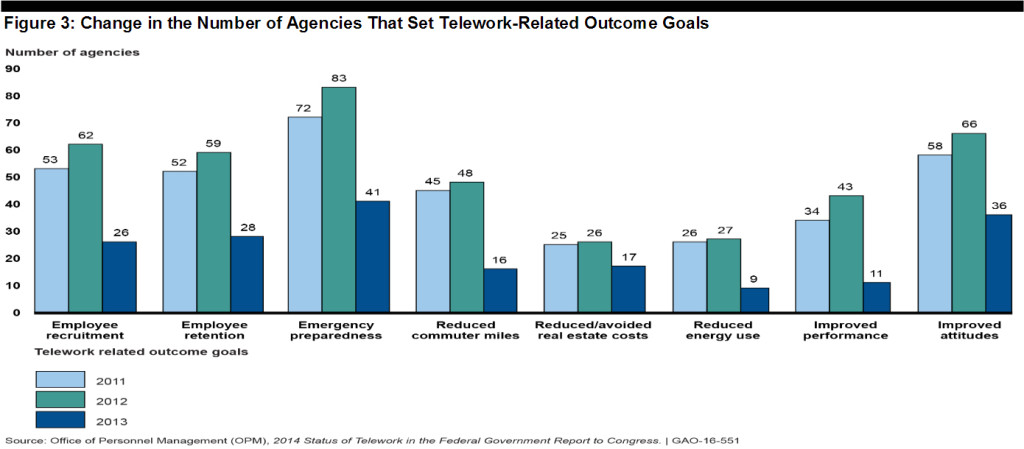
Telework is saving some agencies millions, but too few are measuring the decreases
A new report from GAO found that the top three benefits of telework reported by agencies were improved recruitment and retention, improved work-life balance and...
The General Services Administration reported that it reduced its office space by 40 percent while renovating its headquarters, saving $24.6 million annually in rent, partially attributed to telework. The Department of Agriculture reported a total savings of $10 million from 2011 through 2015, spread across four different categories: real estate, utilities cost, transit subsidies and employee retention.

These are but two examples of how agencies are taking more advantage of telework options and saving millions of dollars in real estate costs and transit subsidies.
A new Government Accountability Office report highlighted these findings as part of its review of six different agencies in 2015 and 2016 to determine the costs and benefits of telework. While only a few agencies were able to deliver measurable results with supporting data, most had conducted internal surveys.
GAO found that the top three telework benefits identified by agencies were improved recruitment and retention, improved work-life balance and increased productivity. A survey conducted by Federal New Radio in June found that millennials rated both telework and work-life balance as key factors in why they choose to work in federal service.

The Office of Personnel Management stopped including questions on telework costs and benefits in its annual telework survey in 2013.
One of the reasons OPM stopped including those questions, according to the report, was because of substantial declines in agencies reporting these figures. From 2012 to 2013, the number of agencies reporting cost savings dropped from 66 to 29. The number of agencies that reported setting goals for emergency preparedness related to telework dropped from 83 to 41.

Where agencies did estimate cost savings and benefits, many did not have supporting data, which is not required by OPM in its survey.
GAO attributed this, at least partially, to difficulty in distinguishing the results of telework from other programs that could achieve similar goals. The Department of Transportation and GSA specifically said that the benefits from telework were indistinguishable from other projects contributing toward reaching certain goals.
One outcome DoT did have data for was reduced carbon emissions due to telework.
“The agency reported avoiding approximately 21.7 million kilograms of carbon dioxide emissions in fiscal year 2014, which is equal to 1.7 kilograms on average per employee, per day,” the report said.
The Environmental Protection Agency also reported lower carbon dioxide emissions due to telework, to the tune of 10,791 metric tons in 2014.
Reps. Elijah Cummings (D-Md.) and Stephen Lynch (D-Mass.) requested the report, and both praised the findings.
“I am encouraged by agencies’ progress in expanding telework to more employees and reducing the barriers to telework,” said Cummings in a release. “It is critical that the Office of Personnel Management take steps to ensure that all agencies provide cost savings estimates and supporting data going forward so we can understand the full value of telework.”
The report said that “management resistance remains the most frequently reported barrier to telework.”
Copyright © 2025 Federal News Network. All rights reserved. This website is not intended for users located within the European Economic Area.
Daisy Thornton is Federal News Network’s digital managing editor. In addition to her editing responsibilities, she covers federal management, workforce and technology issues. She is also the commentary editor; email her your letters to the editor and pitches for contributed bylines.
Follow @dthorntonWFED
Related Stories





